Viking culture is well-known for its use of symbols, which hold deep significance in their beliefs, traditions, and way of life. These ancient Norse symbols, often depicted in their art, jewellery, and even on runestones, provide valuable insights into the values and beliefs of the Viking people. We briefly explore some of the most prominent Viking symbols and their meanings, looking at the cultural and spiritual significance they held for the Norse people.
The Hammer of Thor (Mjölnir)

Perhaps one of the most recognisable Viking symbols, the Hammer of Thor, or Mjölnir, is the weapon of Thor, the god of thunder. This symbol is often worn as a protective amulet and is believed to invoke the power and protection of Thor against enemies and evil forces. It also symbolises strength, courage, and protection.
Huginn and Muninn: The Ravens of Norse Mythology
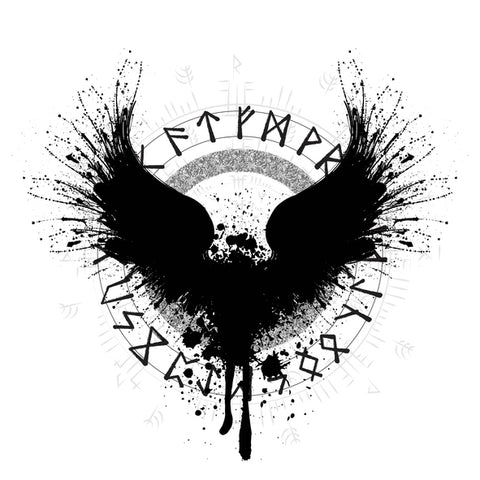
In Norse mythology, Huginn and Muninn are two iconic symbols that hold great significance in the lore of the Vikings. These revered creatures, often depicted as ravens, are closely associated with Odin. Huginn and Muninn are not merely symbolic representations but are also considered companions and messengers of Odin. According to Norse mythology, these ravens fly across the world each day, gathering information and bringing messages to Odin in his hall of Valhalla. While Huginn represents "thought," Munin symbolizes "memory."
The Valknut
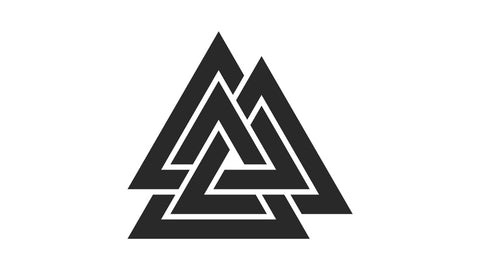
The Valknut, also known as Odin's Knot, is a symbol consisting of three interlocking triangles. It is closely associated with Odin, the Norse God, and is often interpreted as a symbol of Odin's power to bind and unbind the fates of men. It is also thought to represent the interconnectedness of life, death, and destiny in Norse mythology.
Fenrir
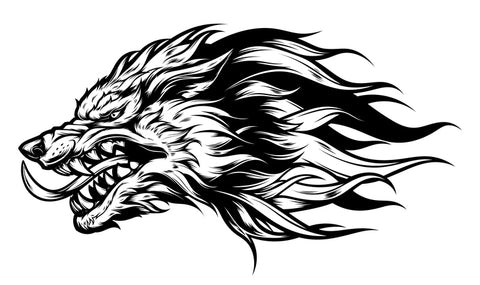
Fenrir, also spelt Fenrisúlfr, is a monstrous wolf in Norse mythology. He is the son of the god Loki and the giantess Angrboða, making him the sibling of the serpent Jörmungandr and the goddess Hel. Fenrir is depicted as a fearsome and powerful creature, destined to bring about chaos and destruction during Ragnarök, the Norse apocalypse. He is often seen as a symbol of chaos and the uncontrollable aspects of the universe in Norse mythology.
Helm of Awe (Ægishjálmr)
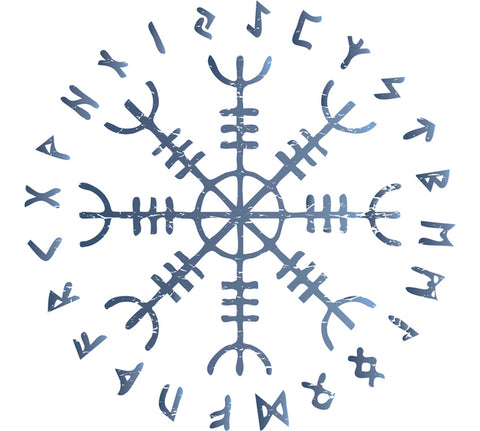
The Helm of Awe is a symbol of protection and strength. It is believed to scare away your enemies and offer protection to the wearer. The symbol is often depicted as a circular array of interlocking arms or spikes.
Vegvisir (Viking Compass)
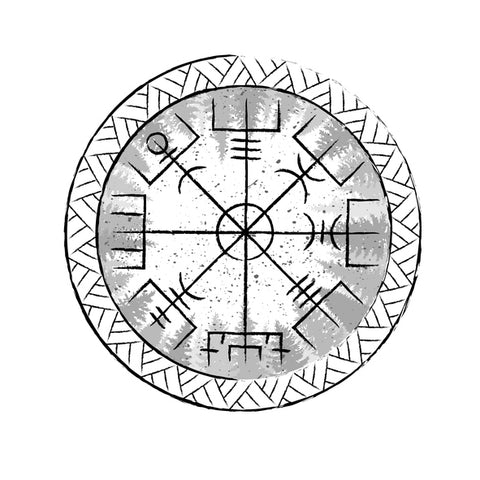
The Vegvisir is a symbol of navigation and guidance. It is thought to help the bearer find their way through stormy weather or difficult conditions, both literally and metaphorically. It is often depicted as a stylised compass with runic symbols surrounding it.
Yggdrasil (The Tree of Life)
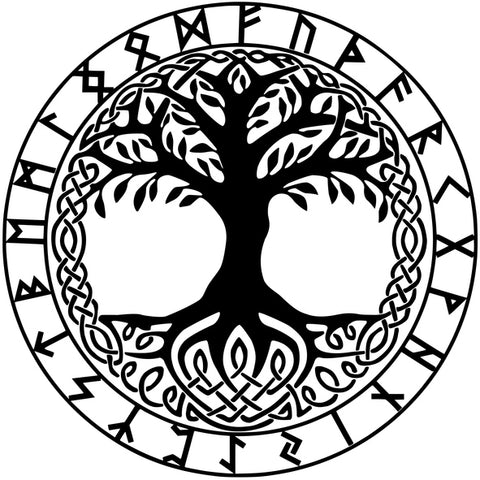
Yggdrasil is the tree that connects the nine worlds of Norse mythology. It symbolises the interconnectedness of all things in the universe and represents the cycle of life, death, and rebirth. Yggdrasil is often represented as a massive ash tree with its roots extending into the underworld and its branches reaching up to the heavens.

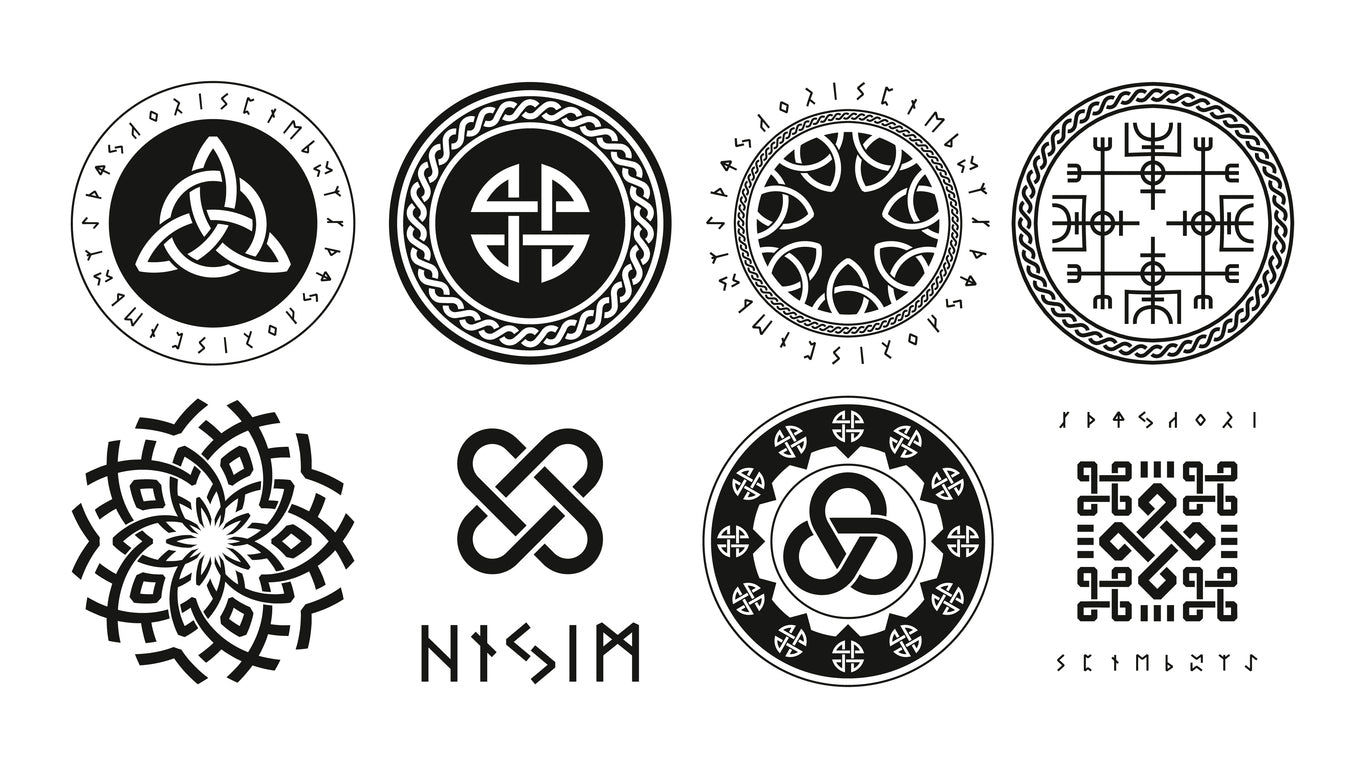
Share:
Viking Rings: Ancient Symbols of Power and Faith
What Jewellery did Vikings wear?